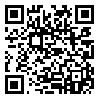Volume 5, Issue 1 (2025)
jpt 2025, 5(1): 81-95 |
Back to browse issues page
Download citation:
BibTeX | RIS | EndNote | Medlars | ProCite | Reference Manager | RefWorks
Send citation to:



BibTeX | RIS | EndNote | Medlars | ProCite | Reference Manager | RefWorks
Send citation to:
Hezareh M, Etemadoleslami Bakhtiari S. Di Bello on Smith's Solution to the Proof Paradoxes. jpt 2025; 5 (1) :81-95
URL: http://jpt.modares.ac.ir/article-34-79377-en.html
URL: http://jpt.modares.ac.ir/article-34-79377-en.html
1- Department of Science and Technology Studies, Faculty of Management, Science and Technology, Amirkabir University of Technology, Tehran, Iran
Abstract: (638 Views)
Proof paradoxes refer to situations where statistical evidence indicates that a suspect is the perpetrator, yet a conviction based solely on this evidence appears counterintuitive. The prevailing approach to addressing proof paradoxes involves establishing a criterion for distinguishing naked statistical evidence from other types of evidence. Smith introduces normic support as a criterion for the aforementioned distinction. Conversely, Di Bello proposes a modified version of normic support, arguing that the absence of access to undercutting defeaters in naked statistical evidence distinguishes it from other forms of evidence. In this research, we argue, in line with Pollock's perspective, that undercutting defeaters can still be accessed in the context of naked statistical evidence. Furthermore, by focusing on an example of proof paradoxes and drawing on Pollock's arguments - illustrated quantitatively by the base rate fallacy - we demonstrate the effectiveness of undercutting defeaters. Consequently, Di Bello's argument appears to be questionable.
Keywords: Proof Paradoxes, Normic Support, Naked Statistical Evidence, Undercutting Defeater, Base Rate Fallacy, Smith, Di Bello, Pollock
Article Type: Original Research |
Subject:
Philosophy of Science (Analytical)
Received: 2025/01/22 | Accepted: 2025/02/27 | Published: 2025/03/19
Received: 2025/01/22 | Accepted: 2025/02/27 | Published: 2025/03/19
References
1. Bar-Hillel M (1980). The base-rate fallacy in probability judgments. Acta Psychologica. 44(3):211-233. [Link] [DOI:10.1016/0001-6918(80)90046-3]
2. Di Bello M (2019). Trial by statistics: Is a high probability of guilt enough to convict?. Mind. 128(512):1045-1084. [Link] [DOI:10.1093/mind/fzy026]
3. Di Bello M (2020). Proof paradoxes and normic support: Socializing or relativizing?. Mind. 129(516):1269-1285. [Link] [DOI:10.1093/mind/fzz021]
4. Duff RA, Farmer L, Marshall S, Tadros V (2007). The trial on trial (Volume 3): Towards a normative theory of the criminal trial. Oxford: Hart Publishing. [Link]
5. Gardiner G (2018). Legal burdens of proof and statistical evidence. In: Coady D, Chase J, editors. Routledge handbook of applied epistemology. New York: Routledge. [Link] [DOI:10.4324/9781315679099-14]
6. Hamer D (2004). Probabilistic standards of proof, their complements and the errors that are expected to flow from them. University of New England Law Journal. 1(1):71-107. [Link]
7. Moss S (2016). Probabilistic knowledge. Oxford: Oxford University Press. [Link]
8. Nesson CR (1979). Reasonable doubt and permissive inferences: The value of complexity. Harvard Law Review. 92(6):1187-1225. [Link] [DOI:10.2307/1340444]
9. Pollock JL (2001). Defeasible reasoning with variable degrees of justification. Artificial Intelligence. 133(1-2):233-282. [Link] [DOI:10.1016/S0004-3702(01)00145-X]
10. Redmayne M (2008). Exploring the proof paradoxes. Legal Theory. 14(4):281-309. [Link] [DOI:10.1017/S1352325208080117]
11. Roth AL (2010). Safety in numbers? Deciding when DNA alone is enough to convict. New York University Law Review. 85(4). [Link]
12. Schoeman F (1987). Statistical vs. direct evidence. Noûs. 21(2):179-198. [Link] [DOI:10.2307/2214913]
13. Smith M (2018). When does evidence suffice for conviction?. Mind. 127(508):1193-1218. [Link] [DOI:10.1093/mind/fzx026]
14. Thomson JJ (1986). Liability and individualized evidence. Law and Contemporary Problems. 49(3):199-219. [Link] [DOI:10.2307/1191633]
15. Wells GL (1992). Naked statistical evidence of liability: Is subjective probability enough?. Journal of Personality and Social Psychology. 62(5): 739-752. [Link] [DOI:10.1037//0022-3514.62.5.739]
16. Williams G (1979a). The mathematics of proof-1. Criminal Law Review. p. 297-308. [Link]
17. Williams G (1979b). The mathematics of proof-2. Criminal Law Review. p. 340-354. [Link]
18. Zabell SL (2005). Fingerprint evidence. Journal of Law and Policy. 13(1):143-179. [Link]
| Rights and permissions | |
 |
This work is licensed under a Creative Commons Attribution-NonCommercial 4.0 International License. |






